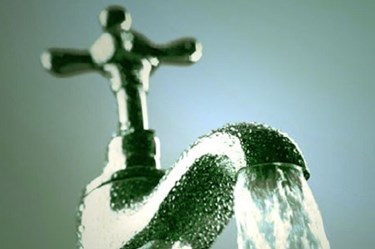Nestlé's Cero Agua Factory In Mexico Raises The Water Conservation Bar
By Isaac Fletcher, contributing writer, Food Online

By implementing water-condensation collection, treatment, and recycling processes into the factory’s operations, Nestlé is seeing significant water savings and eliminating the need for groundwater extraction
Not long after Nestlé decided to help lead the charge against Ebola, the company opened its most water efficient factory in the world. Located in Jalisco, Mexico, the factory represents a blueprint that will be replicated in other Nestlé factories around the globe. By implementing new processes that deliver significant efficiencies, the Cero Agua dairy factory will move toward becoming a zero-water factory by using mostly recycled water provided by its dairy operations. The expected water savings per day are equivalent to the volume needed to fill an Olympic-sized swimming pool. This volume is enough water to meet the average daily consumption need of 6,400 people.
Nestlé CEO Paul Bulcke says, “In Mexico, and around the world, water is a vital and fragile resource. Due to the relevance of water in the production of food and its role in the preservation of life, Nestlé worldwide will continue to pursue initiatives that contribute to the maintenance and access to natural resources.”
The Cero Agua factory heats fresh cow’s milk — normally around 88 percent water — at a low pressure to remove some of the water content. The steam that results from this process is condensed, treated, and used to clean the machinery itself. After being used to clean the machines, the water is collected once again, purified, and recycled to be used for things such as watering gardens or cleaning. This water recycling process eliminates the need to extract groundwater for operations, which saves around 1.6 million liters of water each day.
Marcelo Melchior, head of Nestlé Mexico, explains that these water-saving efforts are part of Nestlé’s goals to promote the “conservation, treatment, recycling, and water efficiency in our operations and among farmers, suppliers and other partners in our supply chain.” The Cero Agua project, along with the company’s other water-savings initiatives, have allowed Nestlé to reduce its total water withdrawal by almost one-third globally over the last decade while also increasing production.
Nestlé’s 2013 publication of its Commitments on Water Stewardship underscores the importance of water access and conservation. The following are some key highlights of the Water Stewardship initiative:
- Nestlé has more than 170 water-saving projects among its factories
- The company has reduced water withdrawals by 33.3 percent per ton of production since 2005
- Water discharges per ton of product have been reduced by 48.5 percent since 2005
